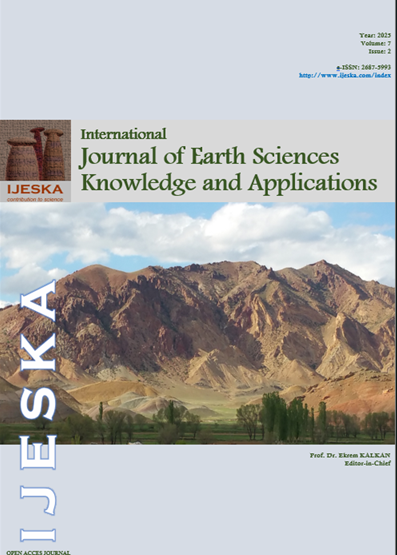Diversity of Seagrasses in Shwe Thaung Yan Coastal Area, Ayeyarwady Region, Myanmar
Keywords:
Diversity, dominance, seagrass, Ayeyarwady Region, MyanmarAbstract
Seagrasses take part in many important roles of marine biodiversity such as nursery habitat, protective habitat, direct food source and nutrient cycling. The diversity of seagrasses was determined in the seagrass meadows along the Shwe Thaung Yan coastal area, Ayeyarwady Region, Myanmar. Four stations (M1, M2, W1 and P1) were established: M1 and M2 stations were located along Magyi coast at Latitude 17˚03'42.5"N, Longitude 094˚27'05.7"E and Latitude 17° 04' 14.6"N, Longitude 094° 57' 1.3"E respectively. W1 station was positioned at Latitude 17˚08'32.2"N, Longitude 094˚27'41.9"E in Wetthay bay. P1 station was set at Latitude 17˚ 09' 56.9" N, Longitude 094˚29' 42.2"E in Phoe Htaung bay. A total of nine seagrasses from the families of Cymodoceaceae and Hydrocharitaceae were recorded in the stations. One-way ANOVA analysis showed a significant difference (p<0.05) in Shannon diversity values among the stations. The highest diversity was observed at W1 station (1.63524 (H')). The results showed that there were no highly dominant seagrasses in the stations, which were made up of multi-specific seagrass meadows. The evenness index revealed that there were differences among the stations with the seagrass found in W1 station having the highest evenness (J’=0.84035). Thalassia hemprichii was observed as a dominant species in Magyi (M1 station) and Wetthay Bay.
References
Aboud, S.A., Kannah, J.F., 2017. Abundance, distribution and diversity of seagrass species in Lagoonal Reefs on the Kenyan coast. American Academic Scientific Research Journal for Engineering, Technology, and Sciences 37 (1), 52-67.
Brower, J.E., Zar, J.H., Ende, C.V., 1990. Field and Laboratory Methods for General Ecology. Wm. C. Brown Publishers, the University of Michigan.
Bostrom, C., Jackson E.L., Simenstad C.A., 2006. Seagrass landscapes and their effects on associated fauna: A review. Estuarine, Coastal and Shelf Science 68, 383-403.
den Hartog, K.J., 2006. Taxonomy and biogeography of seagrasses. In: Larkum, A. W. D. et al., Seagrasses. Biology, Ecology and Conservation 3 (5), 1-23.
Durate, C.M., 1991. Allometric scaling of seagrass form and productivity. Marine Ecology Progress Series 77, 289-300.
Erniati, Andika, Y., Imanullah, Imamshadiqin, Erlangga, Rahmad, Tauladan, T.A., Siregar, F.R., Fitri, A., Ritonga, G.H., 2023. Seagrass diversity in Pulau Banyak, Aceh Singkil District, Indonesia. Biodiversitas Journal of Biological Diversity 24 (12), 6621-6628. https://doi.org/10.13057/biodiv/d241224.
Fortes, M.D., 1993. Seagrasses: Their role in marine ranching. In: Ohno M and Critchley AT (Eds), Seaweed Culti-vation and Marine Ranching. JICA.
Gole, S., Prajapati, S., Prabakaran N., Das, H., Kuppusamy, S., Johnson, J.A., 2023. Spatial diversity and habitat characteristics of seagrass meadows with management recommendations in the Andaman and Nicobar Islands, India. Front. Marine Sciences 10, 01-17.
Green, E.P., Short, F.T., 2003. World Atlas of Seagrasses. Prepared by the UNEP World Conservation Monitoring Centre. University of California Press, Berkeley, USA.
Hemminga, M.A., Duarte, C.M., 2000. Seagrass Ecology. Cambridge University Press, The Edinburgh Building, Cambridge CB2 8RU, UK.
Htut, T., 2011. Species composition and distribution of seagrasses in the Magyi (Shwe Thaung Yan) Coastal area [master’s dissertation]. Pathein University.
Htun U.S., Antt M., Salai M, Ha, S.T., Aung, S.T., Lwin, A.M., Lunn, U.Z., 2017. Biodiversity, distribution and coverage of seagrasses in the Myeik Archipelago and Rakhine Coastal areas, in Myanmar. Journal of Aquaculture & Marine Biology 6 (4), 00164. https://doi.org/10.15406/jamb.2017.06.00164.
Krebs, C.J., 2001. Ecology: The Experimental Analysis of Distribution and Abundance. Pearson Education Limited, Edinburgh Gate, Harlow Essex CM20 2JE, England and Associated Companies Throughout the World.
Kuo, J., den Hartog, C., 2001. Seagrass taxonomy and identification key. In: Short FT, Coles RG (Eds.), Global seagrass research methods 31-58.
Mascariñas, H.J.C., Otadoy, J.B., 2022. Seagrass diversity and distribution in Maribojoc Bay, Bohol, Philippines. American Journal of Environment and Climate 1 (1), 12-19.
Miki, S., 1932. On sea-grasses new to Japan. Bot. Mag. Tokyo.1932; 46 (552), 774-788.
Lanyon, J., 1985. Guide to the Identification of Seagrasses in the Great Barrier Reef Region. GBRMPA, Nadicprint Services Pty. Ltd., Townsville, Queensland.
Nolan, K.A., Callahan, J.E., 2006. Beachcomber biology: The Shannon-Weiner species diversity index. Association for Biology Laboratory Education (ABLE) 27, 334-338.
Rein, T., Cherry, A., Murray-Jones, S., Htun, U.S., 2019. Seagrass surveys in Shwe Thaung Yan coastal areas, the southern part of Rakhine Coastal Region, Myanmar: biodiversity, coverage and biomass. Journal of Aquaculture & Marine Biology 8 (3), 105-112.
Short, F.T., Carruthers, T., Dennison, W., Waycott, M., 2007. Global seagrass distribution and diversity: A bioregional model. Journal of Experimental Marine Biology and Ecology 350 (1-2), 3-20.
Short, F.T., Coles, R.G., Short, C.A., 2015. Seagrass Net Manual for Scientific Monitoring of Seagrass Habitat, Worldwide Edition. University of New Hampshire Publication.
Short, FT, Short, CA, Novak, AB., 2016. Seagrasses. In: Finlayson CM, Milton GR, Prentice RC and Davidson NC(eds). The Wetland Book:II: Distribution, Description and Conservation. Springer Science. https://doi.org/10.1007/978-94-007-6173-5_262-1.
Uku, J.N., 2005. Seagrass and their epiphytes: Characterization of Abundance and Productivity in Tropical Seagrass Beds [doctoral dissertation]. Stockholm University.
Zar, JH., 2010. Biostatistical Analysis. Pearson Prentice Hall, Pearson Education. Inc. Upper Saddle River, New Jersey 074511.
Downloads
Published
Issue
Section
License
Copyright (c) 2025 Zue Zue Miko Min

This work is licensed under a Creative Commons Attribution-NonCommercial-NoDerivatives 4.0 International License.
The authors keep the copyrights of the published materials with them, but the authors are aggee to give an exclusive license to the publisher that transfers all publishing and commercial exploitation rights to the publisher. The puslisher then shares the content published in this journal under CC BY-NC-ND license.



